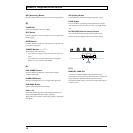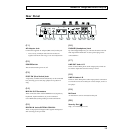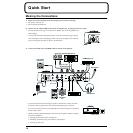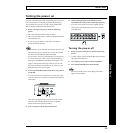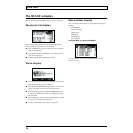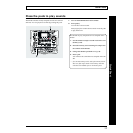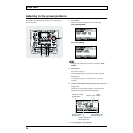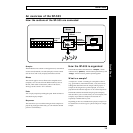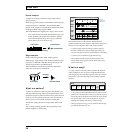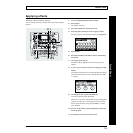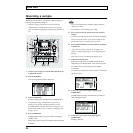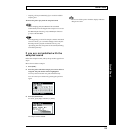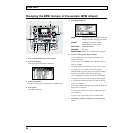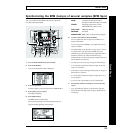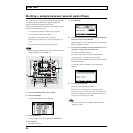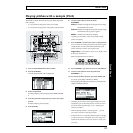
20
Quick Start
Phrase samples
A sample of an actual performance is generally called a
“phrase sample.”
When using a phrase sample on the SP-505, set the Play Type
sample parameter to “PHRASE.” This allows the BPM
(tempo) of the sample to automatically be adjusted to match
the playback BPM of the sequencer BPM.
The sample BPM can be adjusted in a range of 0.5–1.3 times.
* If the sequencer BPM exceeds the allowable BPM range of the
sample, the BPM of the sample will be doubled or halved to
stay within the allowable range. This setting is suitable for
phrases that are one or two measures long.
fig.00-15
Single samples
Short samples are generally called “single samples.”
When using a single sample on the SP-505, set the Play Type
parameter to “SINGLE.” With this setting, the sample will
always be played at its own BPM (tempo).
This is suitable for sounds that are played as individual
notes, such as drums or sound effects.
fig.00-16
What is a pattern?
A pattern is performance data (sequence data) between one
and eight measures long, which records the timing at which
samples are played. A pattern consists of four parts, and each
track can record a separate performance for sounds such as
drums or bass. You can think of samples as being like
instruments, while patterns are comparable to the musical
score.
You can keep switching patterns during playback, or join
patterns together to create a song.
fig.00-17
The internal memory of the SP-505 contains 40 preset
patterns suitable for dance rhythms, and 100 user patterns in
which your own sequence data can be freely recorded.
* A pattern simply records the timing at which a sample is
sounded, and does not record the sample itself. Thus if you
overwrite a sample, the content of the performance will change.
* A pattern can be a maximum of eight measures long.
* When a phrase sample is played, the BPM (tempo) of the
phrase sample itself is ignored, and the BPM (tempo) of the
pattern will be used.
What is a song?
A “song” consists of several patterns joined in the desired
order of playback. You can create a song beforehand, and
then simply play it back on the sequencer when you need to
perform live. Up to twenty songs can be stored in internal
memory.
fig.00-18
* A song simply contains information about the order in which
patterns are to be played back; it does not contain the sequence
data of the patterns themselves. This means that if you modify
the sequence data of one or more of the patterns, the result
obtained when playing back the song will also change.
* When you play back a song, you can enable the BPM (tempo)
specified for each pattern (p. 55).
Sampling
Performance
Phrase Sample
Sampling
One-shot Sample
Drum Sound
Pattern
Drum
Part
Bass
Part
Inst 1
Part
Inst 2
Part
(Hi-hat)
(Snare Drum)
(Bass Drum)
Song
Melody
A
Intro Melody
B
Melody
A
Melody
B
Ending
Pattern Pattern Pattern Pattern Pattern Pattern



